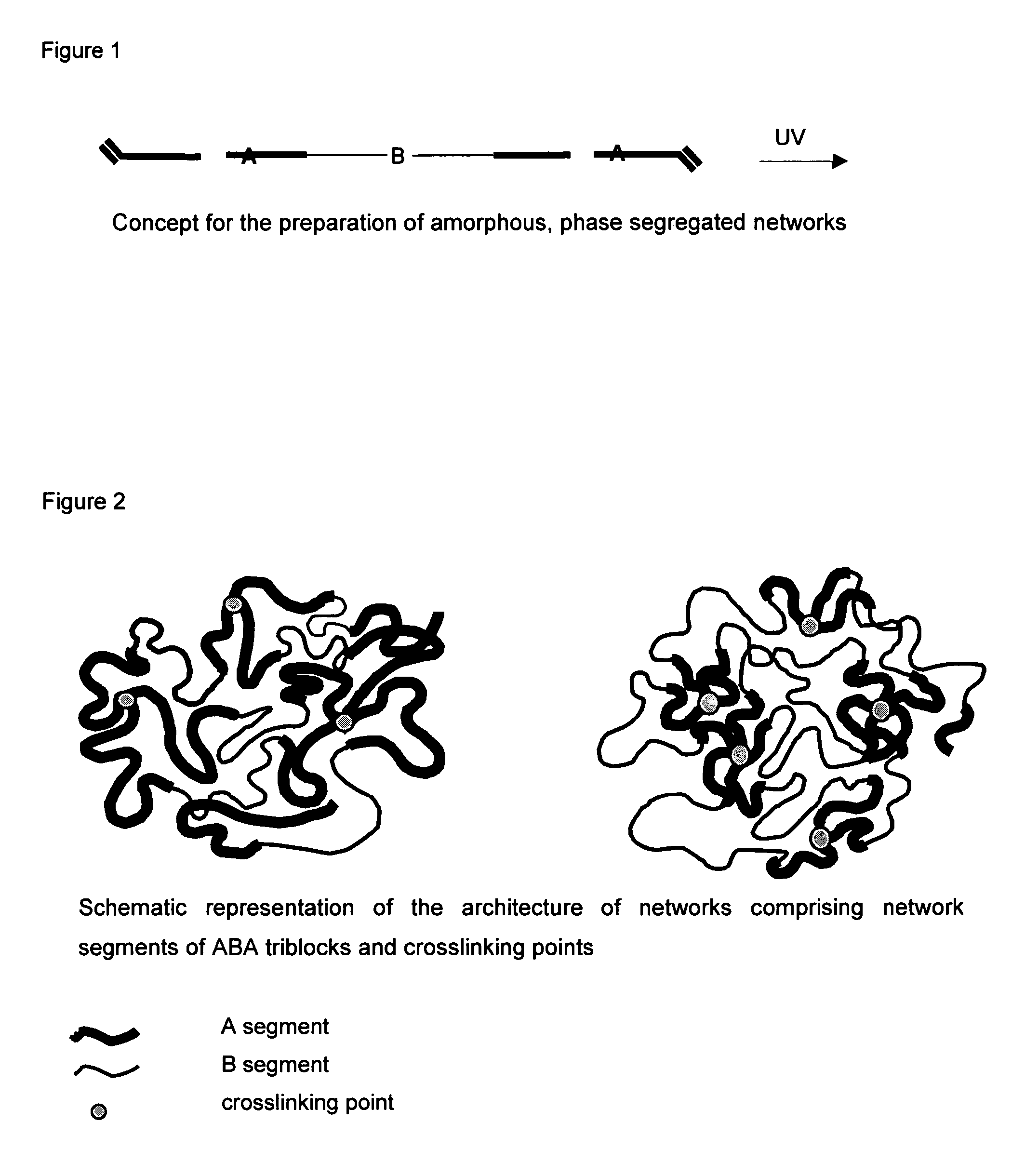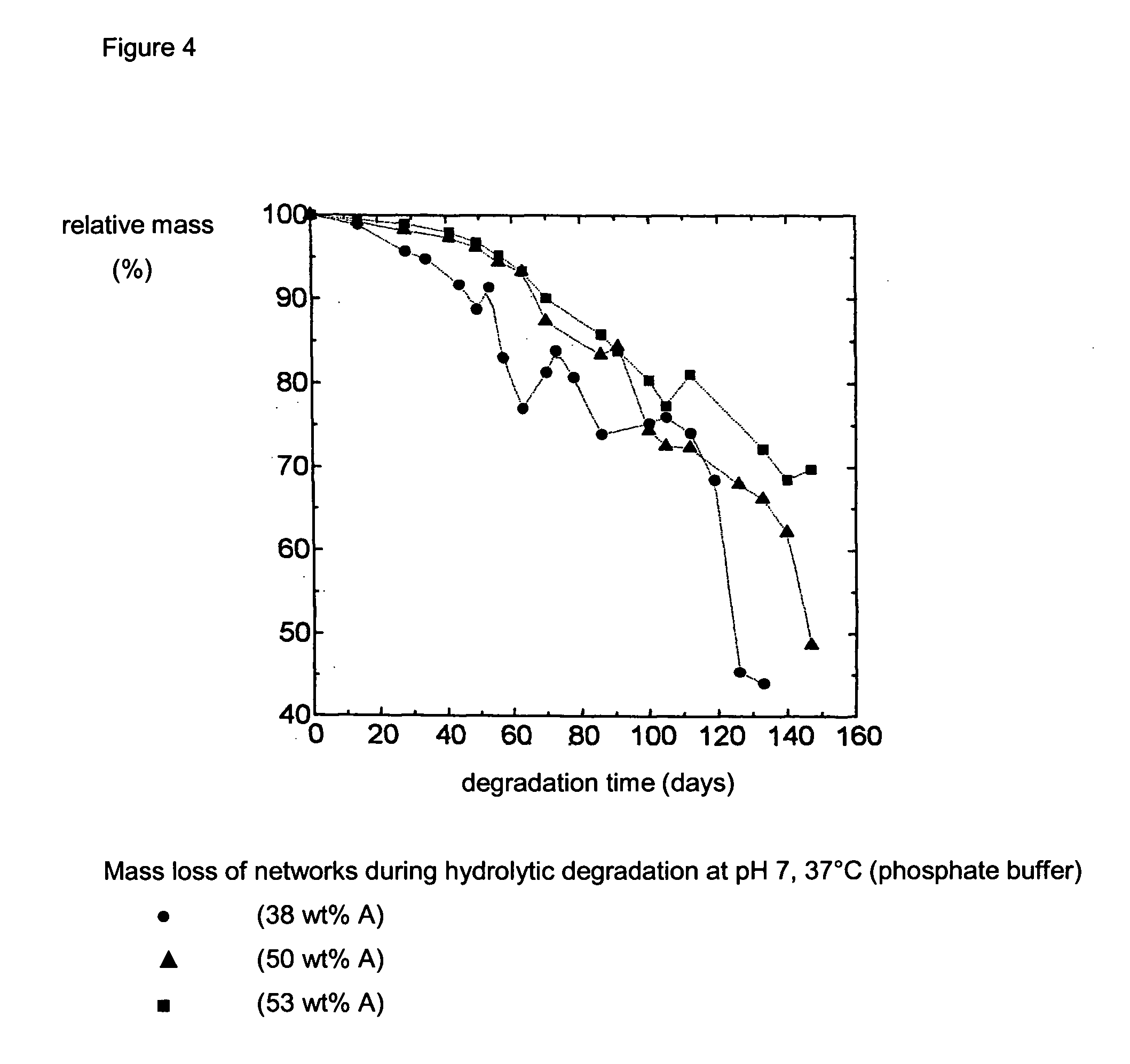Amorphous polymer networks
a polymer network and polymer technology, applied in the field of amorphous polymer networks, can solve the problems of loss of semi-crystallinity of most materials, inability to re-establish the primary shape with the desired accuracy, and inability to achieve the desired physical and geometrical properties again
- Summary
- Abstract
- Description
- Claims
- Application Information
AI Technical Summary
Benefits of technology
Problems solved by technology
Method used
Image
Examples
Embodiment Construction
[0010] In the following, the present invention is described in more detail.
[0011] The network in accordance with the present invention comprises a covalently crosslinked polymer, which consists of amorphous phases. The network is formed from a polymeric component, which is an ABA-triblock cooligomer or -copolymer (designated in the following simply as coplymers). The ABA-triblock copolymers are functionalized at the terminals with polymerizable groups and these ABA-triblock copolymers act as macromonomers (FIG. 1). The macromonomers to be used in accordance with the present invention are described in detail in the following.
[0012] ABA-Triblock Copolymers as Macromonomers
[0013] The network in accordance with the present invention comprises a polymer component, which does not only show physical interaction but which is present in a covalently crosslinked form.
[0014] This network preferably is obtained by crosslinking of functionalized macromonomers. The functionalization enables p...
PUM
| Property | Measurement | Unit |
|---|---|---|
| elongation | aaaaa | aaaaa |
| wavelength | aaaaa | aaaaa |
| glass transition temperature | aaaaa | aaaaa |
Abstract
Description
Claims
Application Information
 Login to View More
Login to View More - R&D
- Intellectual Property
- Life Sciences
- Materials
- Tech Scout
- Unparalleled Data Quality
- Higher Quality Content
- 60% Fewer Hallucinations
Browse by: Latest US Patents, China's latest patents, Technical Efficacy Thesaurus, Application Domain, Technology Topic, Popular Technical Reports.
© 2025 PatSnap. All rights reserved.Legal|Privacy policy|Modern Slavery Act Transparency Statement|Sitemap|About US| Contact US: help@patsnap.com



